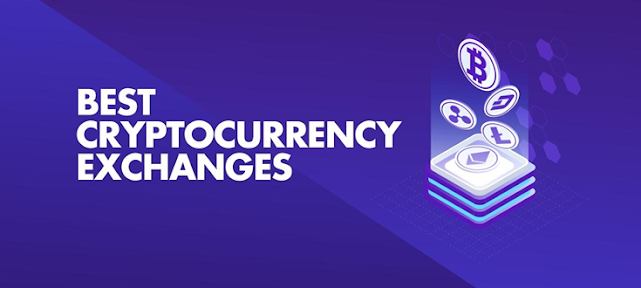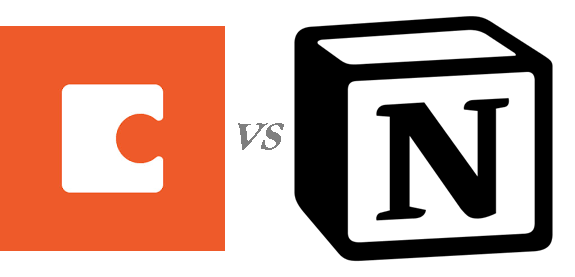5 best crypto exchange platforms going into 2023 (according to experts.)
For
consideration of this list, we decided to test these exchanges on four key
parameters.
o
Safety – We
look at how these exchanges are actively providing and improving measures to
protect assets and legitimize trading.
o
Ease of use
– This is generally the user experience of traders and investors. Are these
platforms easy to use? Are they tailored to both beginners and experts? Do they
provide informational content that makes it easy to trade and invest on their
platforms?
o
Customer support
- How often are they available to provide customer support? This is especially
important for novice traders.
o
Reach &
Volume – The issue of the volume of assets and number of traders on a platform may
seem vain but it is critical when it comes to crypto exchanges. It is important
to know that the more the volume of assets being traded, the higher the risk
and therefore the more likely that the platforms are secured. Also generally,
investors put their assets in exchanges where they feel confident about
security and return.
So, a crypto exchange is
basically a platform that allows cryptocurrency traders to buy and sell digital
assets. Crypto exchanges basically fall under two broad categories: centralized
and decentralized. For a beginner, this is a little technical and it should not
trouble you. Both more or less apply the same principles of trading with a few
minor differences.
A centralized exchange (CeX) is owned and controlled by a central entity. The company in charge of this type of exchange is responsible for matching orders, providing liquidity, and ensuring secure storage of users’ funds. These exchanges are ideal for beginners as they allow buying cryptocurrencies with fiat money such as the US dollar or Euros. They also feature intuitive user interfaces.
Decentralized
exchanges (DeXs), on the other hand, have a somewhat steep learning curve. They
are designed for users who want to trade one crypto asset directly for another
without going through a third party, as is the case with a centralized exchange.
As the name suggests, decentralized exchanges are built on a decentralized
network with no central entity governing the platform.
As I advised, don't let the jargon and technicalities put you off. This list provides a list of the most user-friendly crypto exchanges in the world. They have a manageable learning curve and a great customer support system that will make trading easy. This list is in no particular order.
 |
1. Coinbase Exchange
Asset
volume: Approximately 2.7 trillion dollars
Weekly
visits: One million average weekly visits
Digital
coins supported: 229 coins supported
Fiat
(conventional) currency supported: USD, EURO, GBP
Funding
method: Debit & Credit Bank, PayPal, ACH, Bank Transfer
Coinbase offers more than 200 tradable cryptocurrencies, which should satisfy most investors looking to break into the crypto space. The platform stands out for an easy-to-use interface that makes one-time or recurring crypto transactions a snap. Customers who are interested in features like in-depth technical analysis might consider paying for Coinbase’s Advanced Trade product, which will also be augmented with increased security.
Pros
- Extensive cryptocurrency selection
- Simple and advanced trading
- Earn free crypto
- Educational content
- Top-rated mobile app
- Crypto rewards
- Offers Coinbase debit card
Cons
- Complex fee structure
- High fees on certain transactions
- Limited staking and interest opportunities
2. Gemini
Asset
volume: About 94 million dollars
Weekly
visits: 250,000 average weekly visits
Digital
coins supported: 112 coins supported
Fiat
(conventional) currency supported: USD, EURO, GBP
Funding method: Bank Account & Wire Transfer
Thanks to its simple, easy-to-use interface, we found Gemini to be the best crypto exchange for beginners. Note that the platform’s slightly higher fees are worth paying in exchange for convenience and ease of use. In addition, Gemini offers an extensive selection of educational materials in its Cryptopedia library. Users can read up on a whole host of crypto topics, from advanced crypto trading strategies to understanding the latest developments in decentralized finance (De-fi.)
Pros
- Digital assets are insured
- Offers crypto-to-crypto trading for certain coins
- Wide variety of cryptocurrencies
Cons
- Fees are relatively high
- The fee structure is difficult to understand for beginners
3. Kraken
Asset volume: Slightly over 811 billion dollars
Weekly visits: One million average weekly visits
Digital coins supported: 215 coins supported
Fiat (conventional) currency supported: USD, EURO, GBP
Funding method: Wire Transfer, ACH
Kraken is one of the oldest U.S. crypto exchanges, founded in 2011 during crypto’s Paleolithic era. This platform offers a solid range of coins with very competitive trading fees. It’s also one of the few exchanges in the U.S. to offer margin trading and a suite of other advanced trading tools like advanced order types and futures trading. This exchange offers two trading platforms: Kraken and Kraken Pro. The basic Kraken platform with “Instant Buy” doesn’t offer the cheapest fees, although advanced users can get volume discounts and lower their costs by trading on Kraken Pro.
Pros
- Convenient, intuitive terminal with one-click trading;
- All major cryptocurrencies, as well as seven fiats;
- Margin trading, as well as futures and indices trading ;
- Large leverage (x5 for margin, x50 for futures trading);
- An extensive database of information and training materials;
- Large trading volumes on the exchange provide high liquidity;
- Some of the
lowest fees in the cryptocurrency market.
Cons
- No investment programs;
- Call center service is not the easiest to find on the platform.
4. Crypto.com Exchange
Asset
volume: Currently at 408 billion dollars
Weekly
visits: A little under a million average weekly visits
Digital
coins supported: Over 250 coins supported
Fiat
(conventional) currency supported: No fiat currencies supported
Funding
method: N/A
Beginners
can benefit from the relative ease of buying and selling cryptocurrencies on
Crypto.com, although it charges slightly steeper fees than some competitors.
The Crypto.com DeFi wallet allows users to store their crypto and earn rewards
on their assets. Crypto.com provides a very good selection of tradable
cryptocurrencies, with more than 250 available. The Crypto.com Visa Card is
available for users who want to optimize for coin-based rewards.
- Over 90 cryptocurrencies available
- Visa card that allows you to spend your crypto and earn rewards
- Ability to earn interest on crypto holdings at a higher rate than the best high-yield savings accounts
Cons
- Higher trading fees for low-volume traders, especially those without holdings of Crypto.com’s native cryptocurrency, Cronos (CRO)
- In-app live support can be slow
- Cashback rewards and other perks are paid out in CRO, meaning you may experience fluctuations in your rewards’ value and may also need to cash it out to GBP
5. Binance
Asset
volume: Currently at a little over 27 trillion dollars
Weekly
visits: A little over 16 million average weekly visits
Digital
coins supported: Over 391 coins supported
Fiat
(conventional) currency supported: It supports the three major world currencies
plus over 40 others.
Funding
method: Bank Account & Wire Transfer
This is the leading cryptocurrency exchange founded in 2017 in Hong Kong. It features a strong focus on altcoin trading. Binance offers crypto-to-crypto trading in more than 600 cryptocurrencies and virtual tokens, including Bitcoin (BTC), Ether (ETH), Litecoin (LTC), Dogecoin (DOGE), and its own token Binance Coin (BNB).
- Low fees compared to other exchanges
- 25% trading fee discount if you pay fees using Binance Coin (BNB)
- Educational resources available
- Identity verification process
- Tax statement portal to help prepare crypto taxes
Cons
- $10 minimum trade
- The site needs a steeper learning curve to use that the other platforms
- Lack of information on security
- History of regulatory scrutiny








Comments
Post a Comment